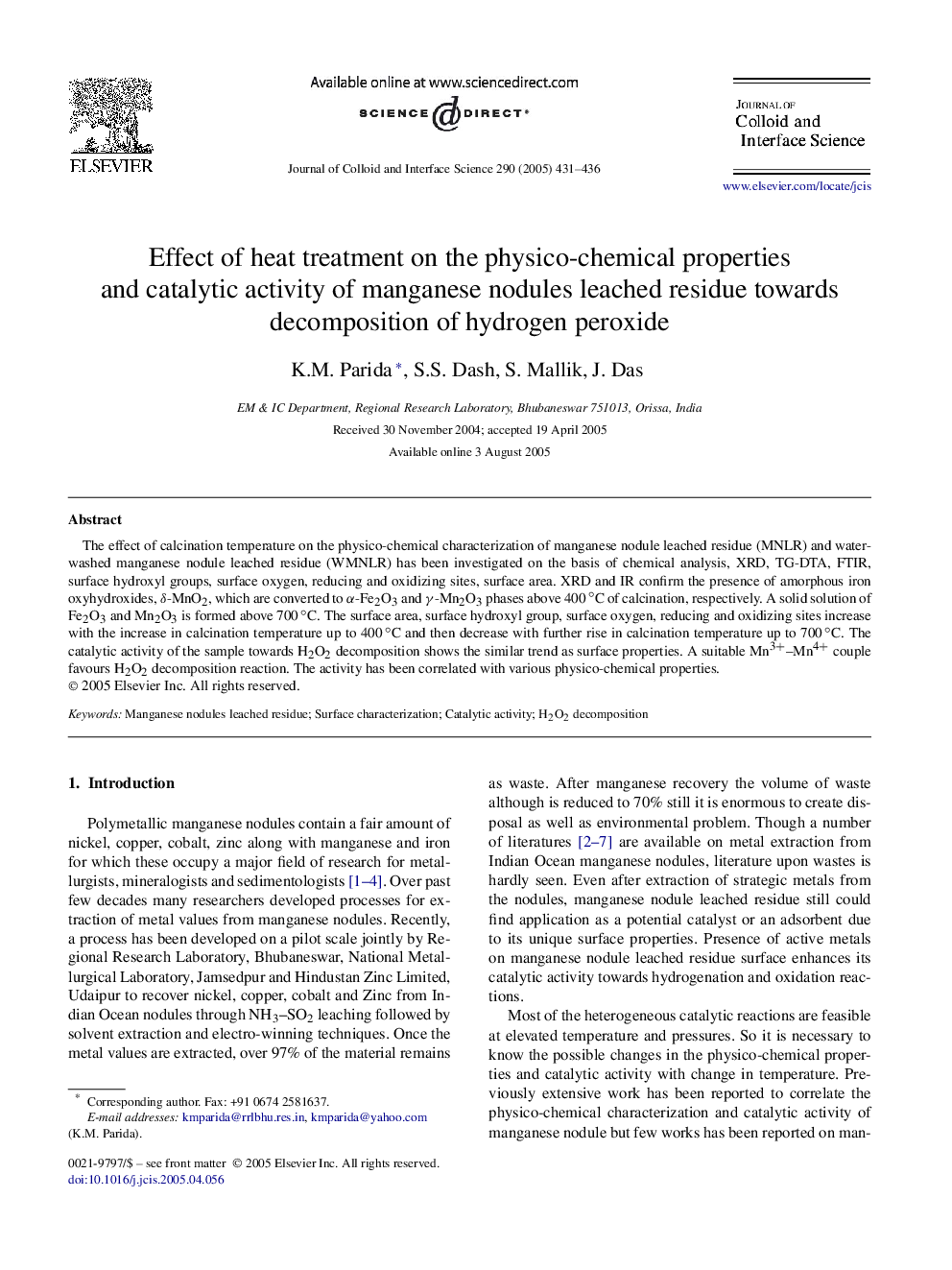| Article ID | Journal | Published Year | Pages | File Type |
|---|---|---|---|---|
| 9679001 | Journal of Colloid and Interface Science | 2005 | 6 Pages |
Abstract
The effect of calcination temperature on the physico-chemical characterization of manganese nodule leached residue (MNLR) and water-washed manganese nodule leached residue (WMNLR) has been investigated on the basis of chemical analysis, XRD, TG-DTA, FTIR, surface hydroxyl groups, surface oxygen, reducing and oxidizing sites, surface area. XRD and IR confirm the presence of amorphous iron oxyhydroxides, δ-MnO2, which are converted to α-Fe2O3 and γ-Mn2O3 phases above 400â°C of calcination, respectively. A solid solution of Fe2O3 and Mn2O3 is formed above 700â°C. The surface area, surface hydroxyl group, surface oxygen, reducing and oxidizing sites increase with the increase in calcination temperature up to 400â°C and then decrease with further rise in calcination temperature up to 700â°C. The catalytic activity of the sample towards H2O2 decomposition shows the similar trend as surface properties. A suitable Mn3+Mn4+ couple favours H2O2 decomposition reaction. The activity has been correlated with various physico-chemical properties.
Related Topics
Physical Sciences and Engineering
Chemical Engineering
Colloid and Surface Chemistry
Authors
K.M. Parida, S.S. Dash, S. Mallik, J. Das,
